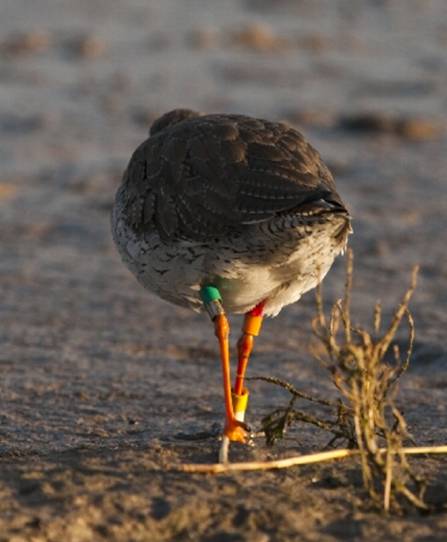Methodological developments
BTO has developed a range of novel analytical methods to improve our understanding of waterbird population changes. Two examples are given below:
Wetland Bird Survey (WeBS) Alerts
In collaboration with our counterparts from SOVON based in the Netherlands and the University of Cape Town, South Africa, we have developed the WeBS Alerts system used to report back on national and local waterbird trends to the UK Government (Atkinson et al. 2006, Austin et al. 2007). Smoothed trends, based on Generalized Additive Models, are used to reveal long-term trends underlying the population indices. Alerts are triggered when the numbers of a species decline by at least 25% (medium-alerts) or at least 50% (high-alert) over short-, medium- and long-term timeframes (5, 10 and 25 years). This resource is establishing itself as the first port of call for those with an interest in waterbird trends in the UK. The Alerts help meet the UK Government’s legal obligation to monitor these sites designated as being of conservation importance and to trigger any action needed to ensure that they remain in favourable status.
Species Turnover
Currently, flagship conservation sites such as Special Protection Areas (SPAs) and Sites of Scientific Interest (SSSIs) that are important for birds, are identified and designated using the peak numbers of birds present. Particularly during the migration period, this method can greatly underestimate the total number of birds using the site, because of the daily arrival and departure of individuals (population turnover). In collaboration with colleagues from CEFE (Centre for Evolutionary and Functional Ecology in Montpellier) and CEH (Centre for Ecology and Hydrology), the BTO has developed new techniques and software to integrate count and mark-recapture data to produce estimates of turnover at key sites. This allows us to gain a better understanding of the total numbers of birds moving through key sites, and consequently to provide better guidance for the designation of protected sites. In collaboration with the Newton & Wright and Farlington Ringing Groups, the BTO is trialling these techniques on populations of Dunlin, Redshank and Black-tailed Godwits on the Stour-Orwell Estuary and Greenshank in Chichester Harbour. Please help us by carefully recording any colour marked individuals you see, and submitting records online.
References
Atkinson P.W., Austin, G.E., Rehfisch, M.M., Baker, H., Cranswick, P., Kershaw, M., Robinson, J., Langston, R.H.W., Stroud, D.A., van Turnhout, C. & Maclean, I.M.D. 2006. Identifying declines in waterbirds: the effects of missing data, population variability and count period on the interpretation of long-term survey data. Biological Conservation 130: 549-559.
Austin, G.E., Maclean, I.M.D., Atkinson, P.W. & Rehfisch, M.M. 2007. The UK Waterbirds Alerts System. In Boere, G.C., Galbraith, C.A. & Stroud, D.A. (eds.) Waterbirds Around the World, 705-710. The Stationery Office, Edinburgh.







Share this page